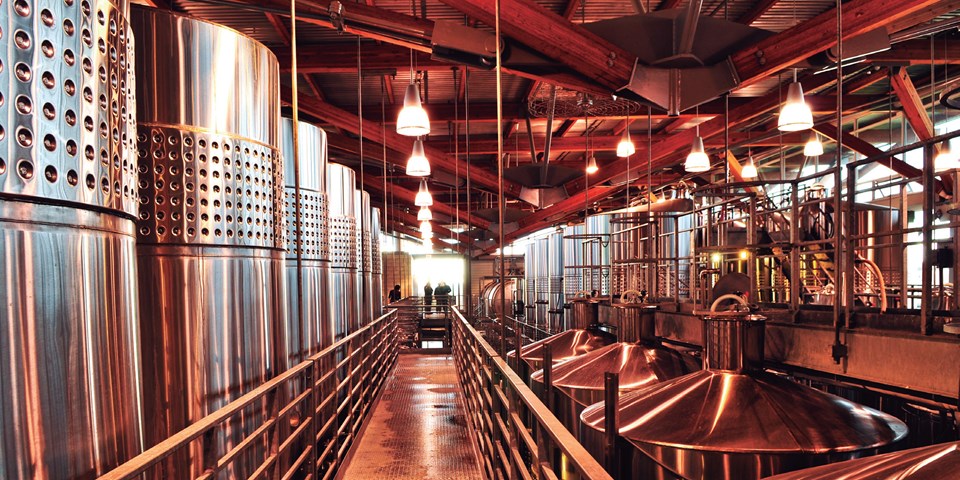By Catarina Muia
Lock began his journey at Ryerson University in Toronto, Ontario, Canada where he graduated with a bachelor’s degree in Civil Engineering and specialized in Structural Steel Design. Strength of materials and steel design turned out to be Lock’s strongest subject and once he graduated, he was excited to find a job in which he could apply what he learned. Unfortunately, it was shortly after he graduated in the late 2000s that Canada experienced its recession. “No one was building anything, and it was extremely difficult to find a job. I knew I needed to take whatever job I could get,” Lock recalls. “Luckily, I was hired at an electrical and mechanical engineering firm that took on end-user projects, and I stayed at that company for about 10 years.”
While civil engineering and mechanical engineering may have some overlapping aspects, they are still quite different. In order for him to excel in his role, Lock spent a lot of his time self-teaching and attending industrial and training seminars.
In his position, Lock oversaw end-user projects and would be involved from the time of the project’s inception up until its final inspection. At the beginning of a project, Lock would first consult with the end-user or any stakeholders involved to determine the use of the application. From there, he would move onto the design and construction of the application.
Once the design and manufacturing of the application had been completed, Lock would then ensure that all required regulatory approvals were met. “In some cases, for example, turnkey applications, I would be the one to check and confirm that the process actually worked with the application,” Lock explains. “For turnkey projects, it was my responsibility to ensure that the end-device or system worked.” At times, this would require additional tuning or additional parts for the application. Lock would take full ownership of each project he was assigned to.
Working for an EPC company, Lock was assigned to projects for a vast range of industries including water and wastewater treatment, automotive, food processing, plastics, power generation, injection molding, and aerospace. One commonality between all of these industries is their need for materials such as stainless steels and corrosion-resistant alloys (CRAs).
Stainless steels versus exotic alloys
As Lock worked on projects for such a vast range of industries, it was crucial for him to understand which materials would work under the specified environments, temperatures, pressures, etc. In some cases, where stainless steel would be more likely to corrode, Lock would need to consider the use of exotic alloys.
Moldings for the plastic industry
The industry Lock did the most work for was plastics, which requires moldings to manufacture anything that is constructed of plastics. Those moldings are typically constructed of 316 stainless steel with a titanium nitride coating. The combination of the material with the coating would result in a longer lifecycle for the mold.
“Take a plastic bottle as an example; the plastic is heated up, air is blown through into the bottle-shaped molding, and it becomes a detailed container with threading at the neck. This process could happen dozens to hundreds of times per minute,” Lock explains. The reason stainless steel is the top choice for this process is because the moldings are repeatedly run at high rates of speed. If the molding was constructed of aluminum, the molding would wear down at a quicker rate.
“If a block of aluminum and a block of stainless steel are being heat up, side-by-side at 1,000°F, then thrown onto a hotplate to sit and rest, the aluminum would shed and lose the heat fairly quickly. In comparison, the stainless steel block will hold that heat for much longer.” In a plant that is running 24/7, heat that is shed quickly is considered wasted energy and can result in inconstant temperature profiles.
In addition, if a product requires stamping (being stamped together, stamped closed, or if something needs to be removed from the mold), that will result in continuous wearing-down of the molding. The titanium nitride coating would be used to eliminate the friction caused by stamping and would keep the molding smooth.

Food and beverage processing
In the food processing industry, specifications will often require 316 stainless steel applications that need to be passivated and electropolished. The electropolishing process removes unnecessary materials from stainless steel surfaces and reduces the roughness of the surface. Passivation is a chemical dipping process that restores contaminated stainless steel to its original corrosion specifications by removing any stray iron from the surface of the stainless steel. If passivation has been completed, the surface is considered perfect. Additionally, if no iron or other shavings from the manufacturing process have come into contact with the stainless steel, and the stainless steel is immersed in a liquid, it should not rust as quickly.
Many of these applications are requested for beer and milk processing. “Anywhere that you would need to heat up a lot of water and it would become part of consumer-grade food after the fact, passivation is a must. That was something I learned on the job—if something is going to be used in the food or beverage industry, it typically needs to be passivated.”
One issue Lock noticed in regard to the food and beverage processing industries was regulatory compliance. “Customers would often purchase heating elements or tanks that were not manufactured to specification, then they would throw their food or beverages into the application even though it is not wired correctly, or it has not been passivated, which means it is not clean. In these cases, the application ultimately fails as it has rusted and corroded.”
Anytime a project requires the use or machining of stainless steel, there will be remnants of machine oils on it, and therefore, the stainless steel must be cleaned. “Just because it is 316 stainless steel does not mean it is clean. It could have just come out of a mill or a computer numerical control (CNC), and that does not mean it is good for what you are doing,” Lock stresses. Before using stainless steel, it must go through a decontamination process before it is installed, especially the applications that are going to be coming in direct contact with the food products.
Another food processing sector that heavily relies on the use of 316 stainless steel is chocolate production. 316 Stainless steel is a predictable material when it comes to using higher temperatures, and can stay thermally stable for a long period of time. In a process known as cascade control, there is a sensor monitoring the temperature of, in this case, chocolate, and another monitor would be monitoring the temperature of the vessel holding the chocolate. With 316 stainless steel, it is very predictable as far as how fast it will heat up, how long it will maintain that heat for, and when to apply more heat to keep it at the correct temperature. When monitoring the stainless steel vessel and the chocolate itself with different monitors, a proportional derivative algorithm can be used to calculate how much energy is needed, and it can detect when the temperature of the chocolate will increase proportionally to that specific energy input.
As a result of the stainless steel vessel shedding minimal heat, it makes the system very precisely-controlled. “If you were to take a stainless steel bowl and an aluminum bowl, you can control the aluminum bowl within a half-degree of accuracy. With the stainless steel bowl, you can get a hundredth-degree of accuracy,” says Lock. “If the temperature was to spike just a little too much, then the chocolate is ruined because it has a seizing effect to it. Chocolate will go bad if it exceeds a specific threshold.”

Water and wastewater treatment
The water and wastewater treatment industry can expose its systems and applications to a number of corrosion inhibitors. Therefore, the material selections and designs need to be completed with a thorough understanding of the environments surrounding the system or application. In one case, Lock was assigned to a project for a wastewater treatment plant in Ontario that required a new design for its reverse osmosis process system. Reverse osmosis is a water treatment process that removes contaminants from the water by using pressure to force water molecules through a semipermeable membrane. During this process, the contaminants are filtered out and flushed away, leaving clean drinking water.
For this particular process that Lock had been assigned to, the system’s original design was created in a country that does not experience harsh winter conditions and was constructed of 316 stainless steel. While the process was able to run without major issues throughout the summer season, it was not designed to withstand Canadian winters and the entire tank froze. “Initially, to prevent the tank from freezing, a heater was installed within the system to keep it working during the colder months. But the tank had not been automated correctly and the heater turned off after the tank froze and turned into a block of ice. Even as a block of ice the system still continued to run for some time but eventually it did burn itself out,” Lock explains.
When he was introduced to the project, Lock’s first goal was to fix the system’s automation to prevent it from freezing. However, as he began to tackle this issue, Lock realized there were many other issues with the system, apart from the freezing. “For example, the pH in the system would experience drastic changes and the elements would cause the tank to corrode immediately once the system began to undergo heavy use,” he states. At its maximum potential, the tank had high temperatures heating up a large amount of water; the heating of water plus drastic pH changes resulted in rust. Once the application had rusted, moisture would ingress and all that was left was water and electricity. “Everyone knows that water and electricity are like milk and spaghetti, they do not work or go well together at all,” Lock states. “Corrosion was through the roof. It was unfortunate, they had this brand-new, beautifully-passivated, electro-polished, and shiny 316 stainless steel application, which ended up looking like the tail-end of a 1989 muffler. It was super rusted, there were holes in it everywhere, and it died.”
Lock determined that the solution to the issue was to redesign and reconstruct the system with Hastelloy B material. While it worked for the system and prevented further corrosion and freezing, he admits the material has never been his first choice, as Hastelloy B is expensive and can be difficult to weld because it requires a back-purged argon system. Additionally, the system required for any seals to be water-and pressure-tested, and everything needed to be completely uniform. “At the end of the project, the entire application was constructed of Hastelloy B, it was all welded together, pressure-tested, we had all the weld seams inspected, and then it was installed.”
Read Part 2 in the April 2020 issue of Stainless Steel World Americas!

